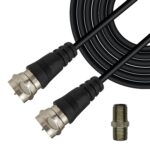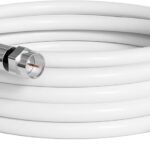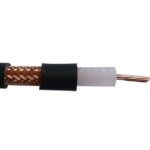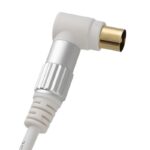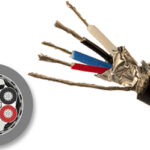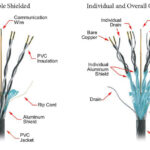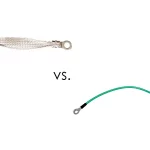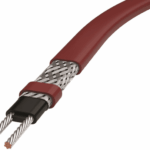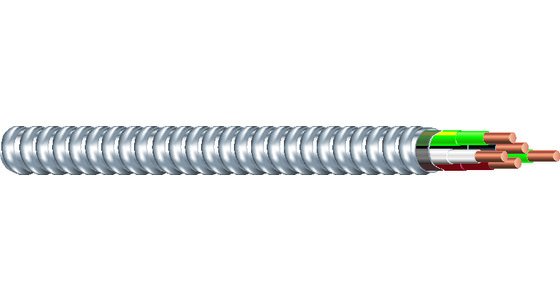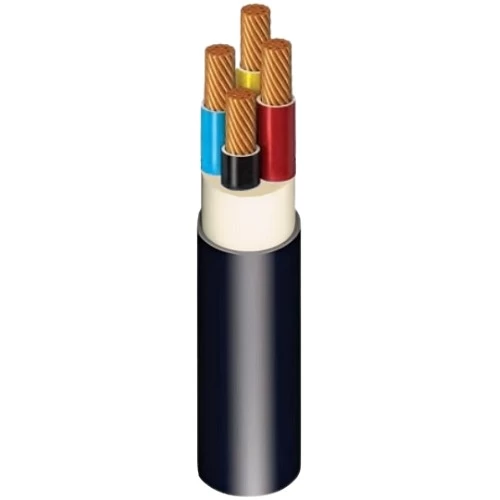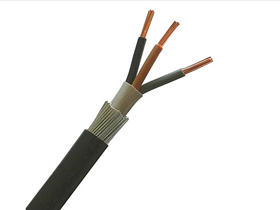What is a Right Angle Aerial Cable?
A right angle aerial cable is a specialized coaxial cable designed with angled connectors (typically 90 degrees) that allow for flexible connections in tight spaces. These cables are essential for modern TV installations, particularly when dealing with wall-mounted televisions, cramped entertainment centers, or situations where traditional straight connectors would create cable stress or damage.
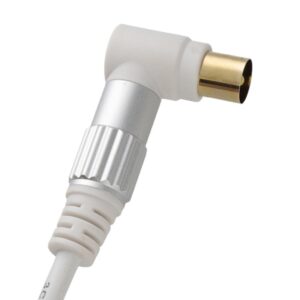
right angle aerial cable
Why Choose Right Angle Aerial Cables?
Space-Saving Design
Right angle aerial cables excel in environments where space is at a premium. The most popular application for this type of plug is when a TV has been installed on a wall and there is little space to get the aerial to plug in. The angled design allows TVs to sit closer to walls without bending or straining the cable connection.
Cable Protection
Traditional straight connectors can be vulnerable to damage from accidental bumps or pulls. These cables are ideal for tight spaces or to prevent damage to your TV and video equipment should anyone accidentally knock it. The right-angle design provides a more secure, low-profile connection that's less likely to be disturbed.
Professional Installation Benefits
The right angle design allows the cable to lay almost flat against the wall, making it perfect for use behind flat screen TVs! It also allows the cable to remain straight, thus avoiding any damage to the cable. This makes them indispensable for professional AV installations and home theater setups.
Key Applications and Use Cases
Wall-Mounted TVs
The primary use case for right angle aerial cables is with wall-mounted televisions. These installations often have minimal clearance between the TV and wall, making traditional straight connectors impractical. The 90-degree angle allows for proper signal transmission while maintaining the sleek appearance of a wall-mounted setup.
Entertainment Centers and Cabinets
Furniture-mounted TVs and entertainment centers frequently have limited space behind devices. Customers find the coaxial cable connector works well in tight spaces, particularly behind furniture. Right angle cables solve the common problem of awkward cable routing in these confined spaces.
Digital TV and Freeview Connections
An aerial cable can be used with lots of different types of equipment. In many situations, leads like this are used to plug a freeview box into a TV. Right angle cables are particularly useful for connecting set-top boxes, digital receivers, and other broadcast equipment where space constraints exist.
Technical Specifications to Consider
Impedance Rating
Most right angle aerial cables operate at 75 ohms impedance, which is the standard for TV and video applications. This ensures proper signal matching and minimal signal loss across the connection.
Cable Quality
Premium quality 75Ω TV aerial patch cables have right angled heads for easy installation in TV's that are wall mounted or where space is limited. The cables are very high quality and have gold plated connectors and solid copper conductors to ensure the best quality signal.
Connector Types
Right angle aerial cables typically feature:
- F-type connectors for satellite and cable TV
- RF connectors for traditional terrestrial TV
- Gold-plated contacts for corrosion resistance
- Screened construction for interference protection
Installation Benefits
Reduced Cable Stress
The 90° angle prevents kinking in tight spaces such as wall corners and behind TVs. This protection extends cable life and maintains signal integrity over time.
Flexible Positioning
These connectors can be adjusted up and down once installed to minimize angle severity and help fit in tight spaces. This adjustability allows for optimal cable routing in various installation scenarios.
Professional Appearance
Right angle cables contribute to cleaner, more professional-looking installations by eliminating cable loops and reducing the visible cable footprint behind devices.
Choosing the Right Cable Length
Standard Lengths Available
Right angle aerial cables are commonly available in:
- 0.4m (40cm) for very close connections
- 1m for standard installations
- 2m for moderate distances
- 3m and 5m for longer runs
Installation Considerations
When selecting cable length, consider:
- Distance between aerial outlet and device
- Cable routing path around obstacles
- Allow slight excess for future adjustments
- Avoid excessive length that could introduce signal loss
Quality Factors to Look For
Connector Construction
Look for cables with:
- Gold-plated connectors for corrosion resistance
- Solid metal construction for durability
- Proper shielding to prevent interference
- Secure connection mechanisms
Cable Specifications
High-quality right angle aerial cables should feature:
- Solid copper conductors for optimal signal transmission
- Double or triple shielding for interference protection
- High-grade dielectric materials
- Proper impedance matching (75 ohms)
Common Installation Scenarios
Behind Wall-Mounted TVs
This is the most common application where right angle cables shine. The angled connector allows the TV to sit flush against the wall while maintaining a secure connection to the aerial outlet.
In Entertainment Centers
Cabinets and entertainment centers often have rear access ports that align poorly with device inputs. Right angle cables solve this alignment issue effectively.
Commercial Installations
Businesses, hotels, and public spaces benefit from the clean appearance and damage resistance of right angle connections in their AV installations.
Maintenance and Troubleshooting
Regular Inspection
Periodically check connections for:
- Loose fittings that might affect signal quality
- Corrosion on connectors
- Physical damage to cable or connectors
- Proper seating of angled connectors
Signal Quality Monitoring
Right angle cables should maintain signal quality comparable to straight cables. If you experience signal degradation, check:
- Connector tightness
- Cable routing for sharp bends
- Interference from nearby electronic devices
Cost Considerations
Right angle aerial cables typically cost slightly more than standard straight cables due to their specialized connector design. However, the benefits in terms of installation flexibility, cable protection, and professional appearance often justify the modest price difference.
Value Proposition
Consider the long-term value:
- Reduced risk of cable damage
- Professional installation appearance
- Flexibility for future equipment changes
- Improved cable management
Future-Proofing Your Installation
Compatibility
Right angle aerial cables work with all standard broadcast signals including:
- Digital terrestrial TV (Freeview)
- Satellite TV
- Cable TV
- Over-the-air HD broadcasts
Technology Evolution
As TV technology continues to evolve, the fundamental need for reliable coaxial connections remains constant. Right angle cables provide a future-proof solution for ongoing broadcast reception needs.
Conclusion
Right angle aerial cables represent a practical solution to common installation challenges in modern home entertainment setups. Their space-saving design, cable protection benefits, and professional appearance make them an essential component for anyone serious about creating a clean, functional TV installation.
Whether you're mounting a TV on the wall, setting up an entertainment center, or working on a commercial AV project, right angle aerial cables offer the flexibility and reliability needed for optimal performance. By choosing quality cables with proper specifications and installation techniques, you can ensure reliable signal transmission while maintaining the aesthetic appeal of your installation.
The investment in right angle aerial cables pays dividends in both immediate installation benefits and long-term system reliability, making them a smart choice for any modern TV setup.

